
Learn how much plumbers cost in Columbus, Ohio. Discover pricing for faucet repairs, pipe work, and emergency services, plus how you can save money.
There are more types of toilets than the standard gravity flush


Toilets aren’t the most exciting purchase when remodeling, but they’re necessary for every bathroom. Whether you’re hiring a plumber or installing the toilet yourself, keep the type of toilet you want in mind when upgrading your bathroom. Flush systems, designs, and toilet seat types are just the tip of the iceberg of what you’ll discover when shopping for a new toilet.
Toilet features may not have crossed your mind, but they are a major factor in this decision. Envision your new bathroom and how the toilet fits into the design and decor while factoring in functionality and accessibility. Here are some considerations for choosing the best toilet for your new bathroom.
Toilets come in one-piece, two-piece, and wall-mount options. Two-piece toilets are the most affordable and easiest to install, but one-piece and wall-mount toilets take up less space. Before choosing your toilet style, decide whether you want to DIY your toilet installation or hire a toilet installer near you. A pro can install your new toilet regardless of the type you choose, as some installs are more complex.
While flushing systems don’t affect a toilet’s aesthetic appeal, they are one of the most critical factors when evaluating toilet types. You should ensure the toilet’s flushing mechanism is strong. The most popular flushing system is a gravity flush, which uses gravity and suction to remove waste.
However, there are options for flushing systems that use less water and resist clogging. When choosing a flushing system, consider the amount of use your toilets get and the issues you currently experience with clogging.
Measure the space in the bathroom to determine if a round or elongated bowl is better. Elongated bowls are 1 ½ inches longer than round bowls. In tight spaces, a round bowl may allow more room for movement. Also, keep the height of household members in mind to choose the most comfortable shape for users.
Toilet seat shapes are based on the bowl shape (elongated or round), but you may find additional features to create the space you desire. A soft-close toilet seat eliminates slamming, an easy-release seat simplifies cleaning, heated and lighted seats add luxury, and bidet seats turn a standard toilet into a bidet.
Toilet height affects users' comfort and the available space in the bathroom. Compare comfort height toilets versus standard height when choosing your toilet type. Standard-height toilets measure 14 ½ to 16 inches, whereas chair-height toilets are 17 to 19 inches tall.
You measure a toilet’s height from the floor to the top of the rim. Standard toilet height promotes a proper sitting angle and may be more comfortable for adults of average height, shorter adults, and children. Chair-height toilets are more comfortable for people with disabilities, older adults, or taller individuals because they require less bending and squatting.
According to HomeWaterWorks, federal law states that today’s toilets cannot use more than 1.6 gallons of water per flush. Still, older toilets may use as much as 7 to 8 gallons of water per flush, depending on their manufacturing date.
Choosing a toilet that uses less water helps conserve water and can reduce utility bills. If water usage is a major concern, focus on dual- or low-flush toilets.
Understanding toilet basics helps you meet your household’s needs. Now, let’s look at the different toilet types to choose from.
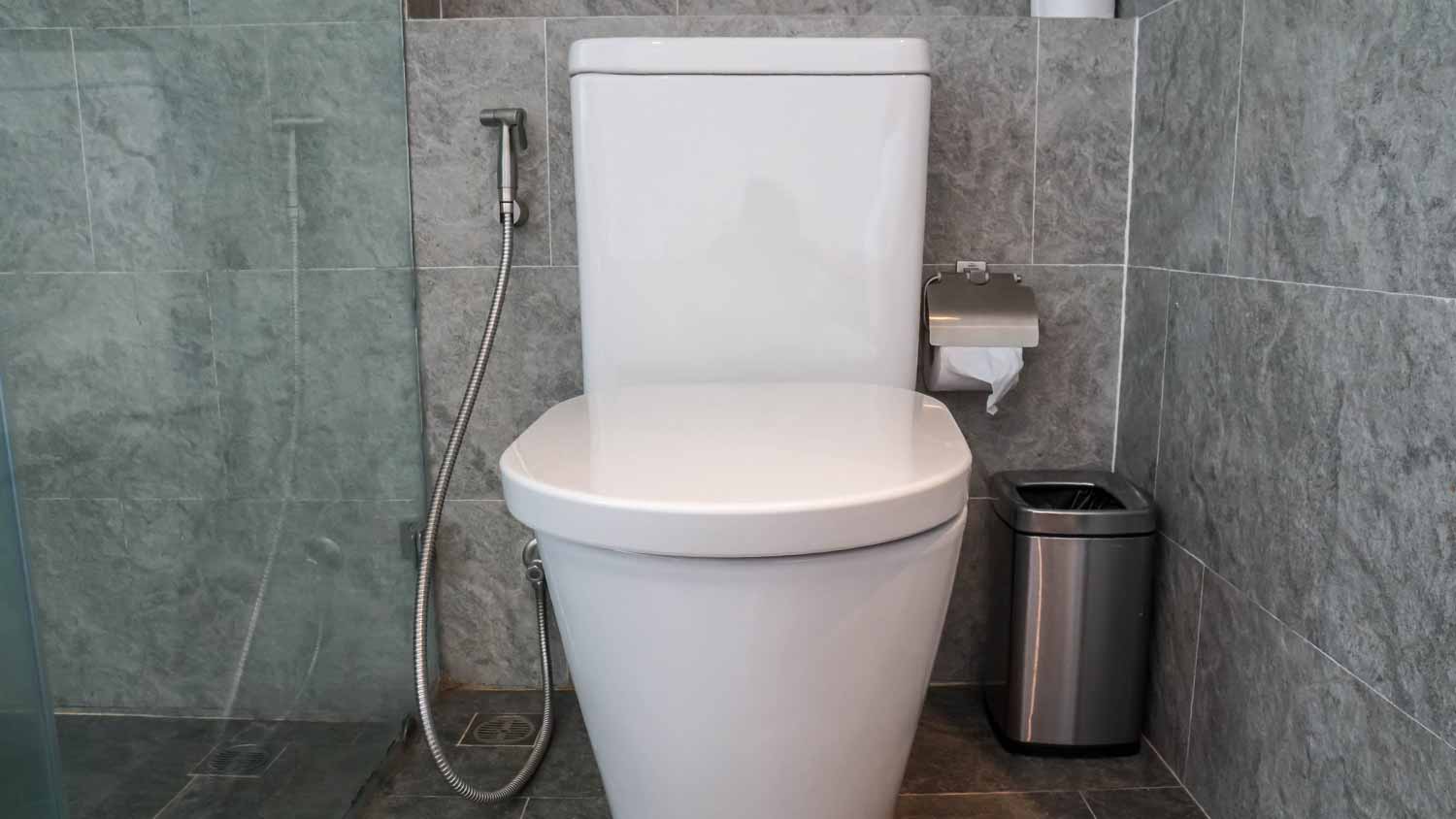
One-piece toilets, as the name suggests, are seamless toilets without separate tanks and bowls. This option is pricier than two-piece toilets but offers a sleeker, more modern design and lasts longer because it has fewer parts. In addition, there are fewer crevices on one-piece toilets, which makes them easier to clean and maintain.
One-piece toilets come in many shapes and sizes, allowing them to fit into the bathroom’s decor. You can choose from different flushing styles and these toilets are a good option for smaller bathrooms because they occupy less space.
| Pros | Cons |
|---|---|
| Easier to clean | More expensive |
| Modern appearance | Heavier to install |
| More durable than two-piece toilets (fewer parts) |
Best for: Guest bathrooms or smaller bathrooms
Two-piece toilets are larger than one-piece models because the tank and bowl are separate. This toilet is the most common but takes up the most space. The bottom piece of a two-piece toilet is the base and bowl, and the top is the tank with the fill and flush valve mechanisms.
Two-piece toilets are a good choice for DIY toilet installation because the pieces are separate and weigh less overall. However, keeping these clean is more challenging because there are more crevices where the tank and bowl meet.
| Pros | Cons |
|---|---|
| Easier to install yourself | More challenging to clean |
| Costs less than one-piece toilets | Takes up more space |
| Easy to replace parts |
Best for: Medium to large bathrooms
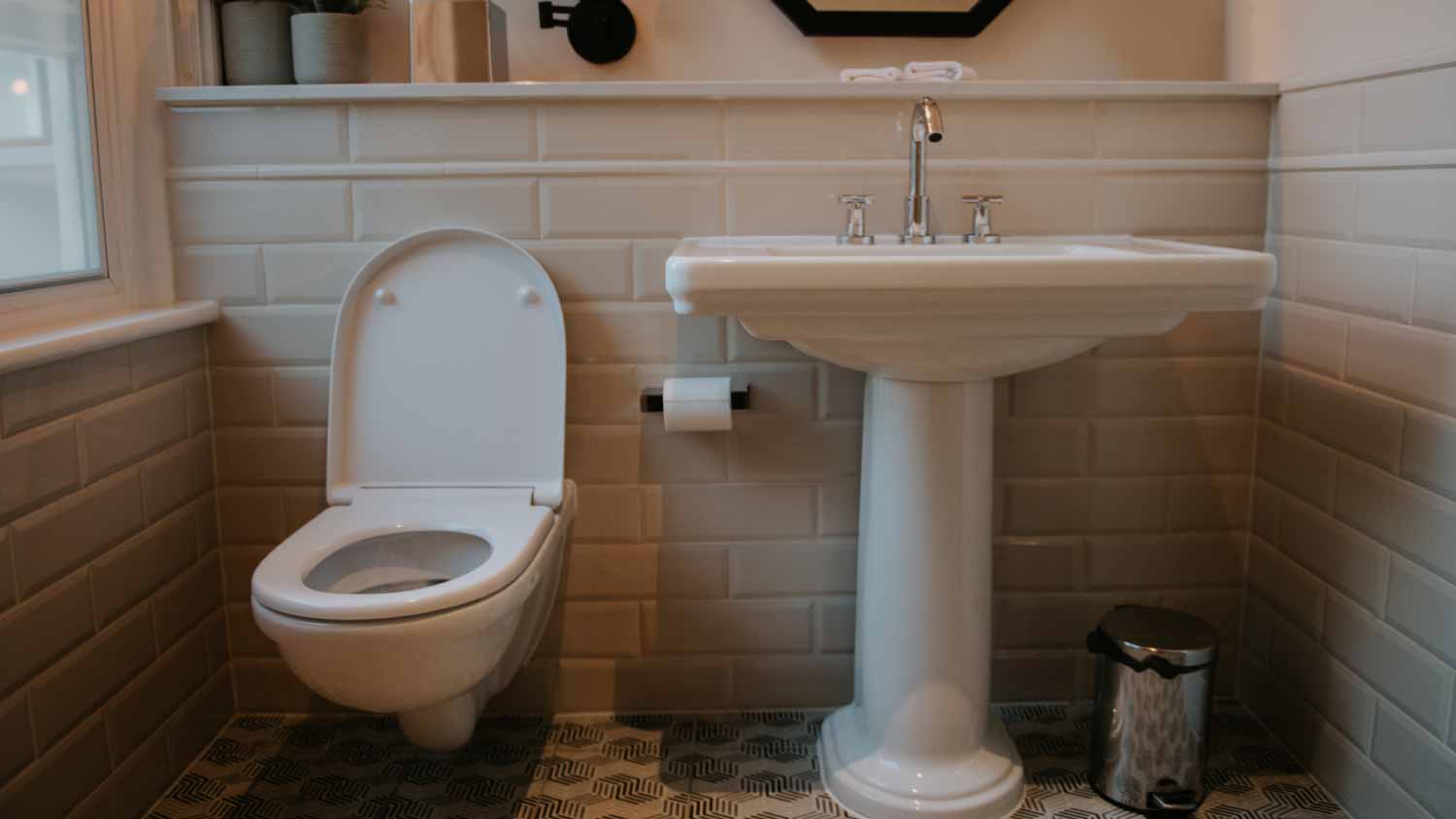
Wall-mounted toilets house their flushing mechanisms and drains inside the wall, so all you see is the toilet base and seat. They’re easier to maneuver at a customized height and work well in accessible bathrooms.
Wall-mounted toilets also offer a sleek design because they don’t have a foot or base, making them great for modern bathrooms. They’re also easier to keep clean because of their slim design and easy access to the floor underneath. The downside is repairs can get costly since you don’t have easy access to the tank and flushing mechanisms.
| Pros | Cons |
|---|---|
| Sleek design | More expensive than other options |
| Easy to clean | Not a DIY installation |
| Saves space | Repairs can be complex |
Best for: Small and modern bathrooms
Most homes have gravity-flush toilets because they are affordable and allow for DIY repairs. With gravity-flush toilets, the water comes from the fill valve, which stops when the tank is full.
When you flush the toilet, the flapper inside the tank opens, pushing the water inside the tank into the toilet bowl. The force of the water from the tank causes the water and waste in the bowl to drain. When the flapper closes, the water refills from the tank.
| Pros | Cons |
|---|---|
| Most affordable flushing mechanism | Flushing power may be weak |
| Low-maintenance | Low-flow models may not be strong enough |
| Relatively quiet |
Best for: Bathroom remodels on a budget
Pressure-assisted toilets don’t rely solely on gravity to drain the toilet waste. Instead, they use water and air pressure to provide more robust flushing. They are commonly known as power-flush toilets because of the pressure the compressed air provides.
These toilets have a sealed pressure tank that stores the water and air. As the tank fills with water, it compresses the air until someone flushes it, which causes the water and air to push the waste down the drain. This is supposed to limit the amount of water per flush and reduce clogging.
| Pros | Cons |
|---|---|
| Reduced water usage | Can be noisy |
| Fewer clogs | More expensive than gravity-flush toilets |
| More reliable than gravity-flush toilets | Repairs can cost more |
Best for: Homeowners looking to conserve water
Not many homes have high-level toilets. Because of their unique design with the cistern, or upper part of the toilet, mounted much higher than the toilet’s base, they work best in Victorian-style decor. They also have a visible flush pipe extending from the cistern to the base, with a chain attached to the cistern for flushing.
| Pros | Cons |
|---|---|
| Matches vintage decor | Pricier than other options |
| Easily customizable | Requires professional repair |
Best for: Victorian-style bathrooms
Low-flow toilets are more prevalent today as more homeowners want to do their part to conserve water. As the name suggests, low-flow toilets use less water with each flush but still drain waste effectively. Multiple flushes may sometimes be necessary, but that’s rare.
Low-flow toilets are often available with a gravity or pressure-assisted flush, so you can still conserve water even further.
| Pros | Cons |
|---|---|
| Reduces water usage | May clog easier |
| Saves money on water bills | Installation may require upgraded plumbing |
| Uses a smaller tank since there’s less water flow |
Best for: Small, budget-conscious families
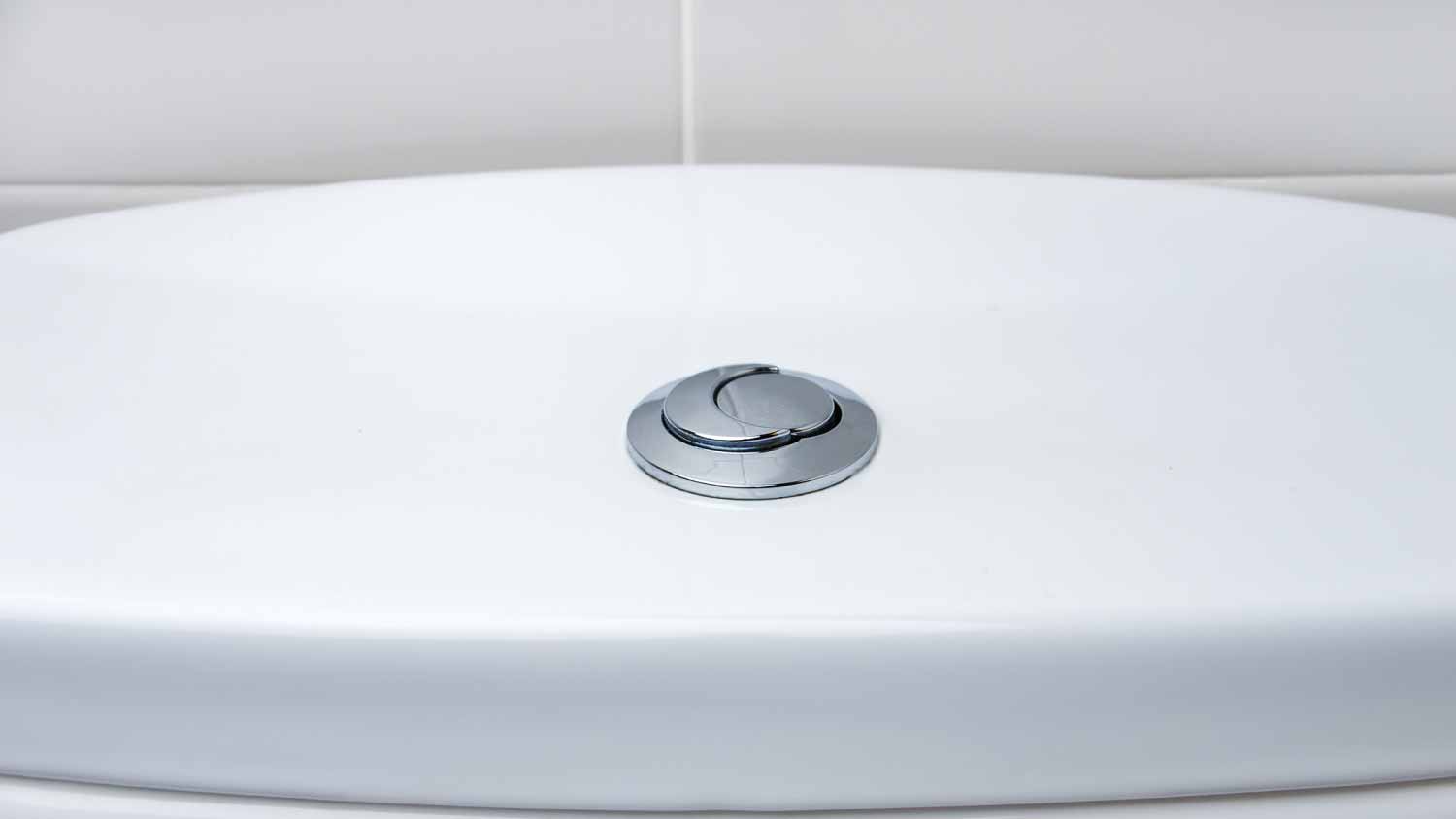
Dual-flush toilets offer a half and full flush option. The half flush works well for liquid waste while conserving water. The full flush is best for larger waste when you need a stronger flush.
The half flush only uses half of the toilet’s tank of water and reduces your water usage. It’s often a good compromise for situations when a low-flow toilet isn’t powerful enough, but it allows for water conservation when a full flush isn’t needed.
Depending on the model, dual-flush toilets may require more extensive cleaning because less pressure is used during a half flush, and the bowl may get dirtier faster.
| Pros | Cons |
|---|---|
| Reduces water bills | More expensive to repair or maintain |
| Reduces the need for multiple flushes | May require more frequent cleaning |
Best for: Environmentally conscious homeowners
An elongated toilet bowl may be more comfortable for taller individuals because it has a longer shape than a round bowl. Round toilet bowls measure 16 ½ inches from the mounting holes to the front of the toilet bowl rim, but elongated bowls measure 18 ½ inches long.
As you can imagine, this takes up more room in the bathroom, so adequate space is necessary. Because of their larger size, they are often more expensive than round toilets, but they often have powerful flushing systems, reducing the need for dual flushes.
| Pros | Cons |
|---|---|
| Larger design | Not suitable for small bathrooms |
| May have more powerful flushing | More expensive than round bowl toilets |
| Provides more comfort for taller people |
Best for: Large bathrooms and taller household members
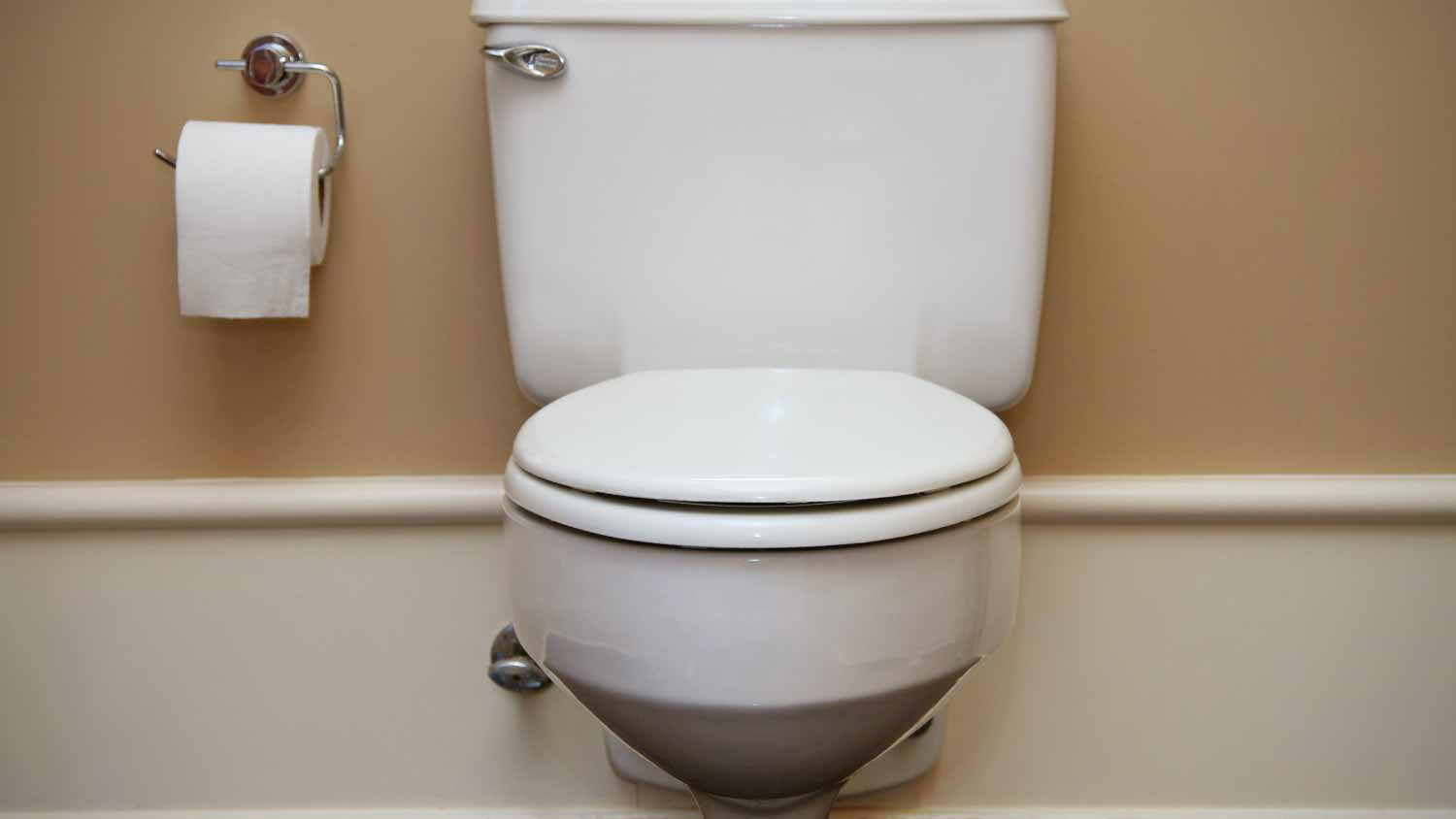
Round toilet bowls are available for most toilet types, including one- and two-piece toilets, and measure 16 ½ inches from front to back. Many homeowners choose them because of their affordability. Round toilet bowls are also the easiest for kids to climb up. They come in various heights, including standard and chair height, and you can choose low- or dual-flush mechanisms.
| Pros | Cons |
|---|---|
| Commonly found for most toilet types | May not be large enough for some people |
| Easy for kids to use | May not have a strong enough flush |
| Works well in small spaces |
Best for: Small bathrooms or families with kids
Smart toilets are a luxury and add special features to a toilet, such as heated seats or bidet features. The features vary by model, but they can often interact with users, providing a more customized experience. Choices include automatic flushing, water conservation, night-lights, or overflow protection.
| Pros | Cons |
|---|---|
| Offers custom options | Costly option |
| May save space if it’s tankless | Expensive to repair |
Best for: Bathroom upgrades with a large budget
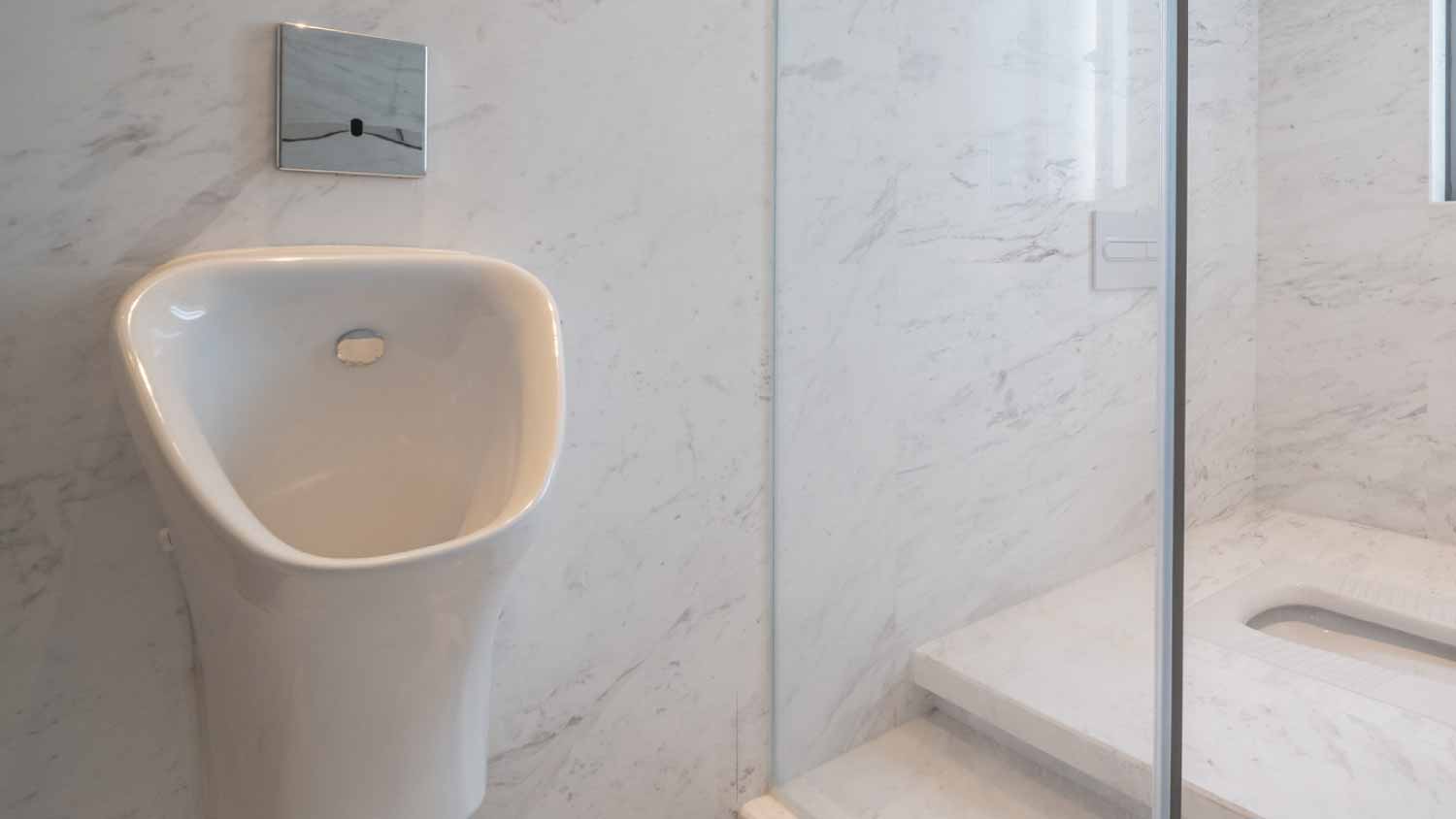
Not as common in homes as in public bathrooms, urinals offer a convenient option for bathrooms where men spend their time. You don’t need much space for urinals since they’re wall-mounted and often use much less water than traditional toilets.
| Pros | Cons |
|---|---|
| Convenience | Limited use |
| Can help older adults with accessibility issues | Can be expensive to install |
Best for: Bathrooms for men
From average costs to expert advice, get all the answers you need to get your job done.

Learn how much plumbers cost in Columbus, Ohio. Discover pricing for faucet repairs, pipe work, and emergency services, plus how you can save money.
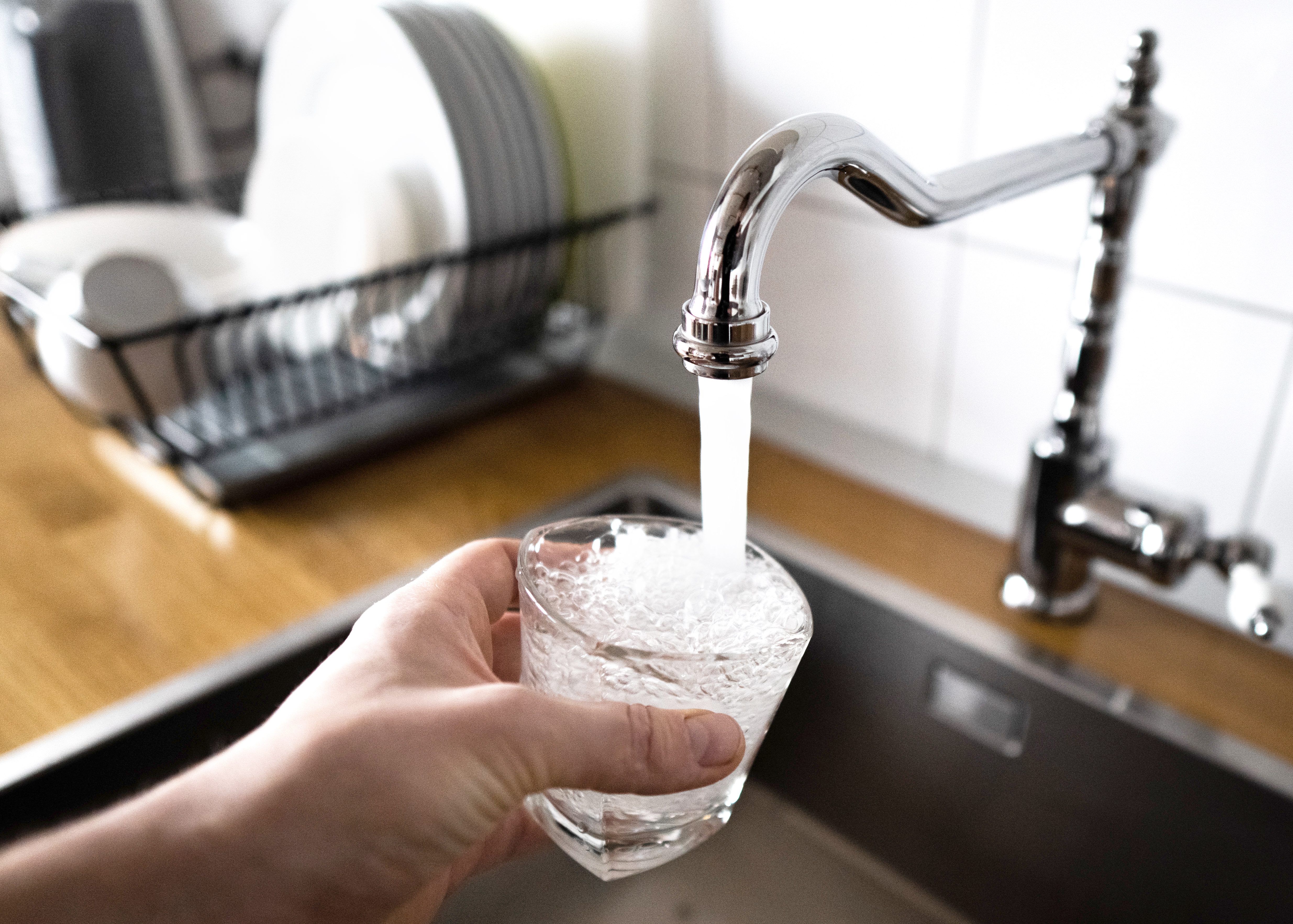
Learn about main water line repair costs in Columbus and what affects pricing to be prepared before you start getting estimates.
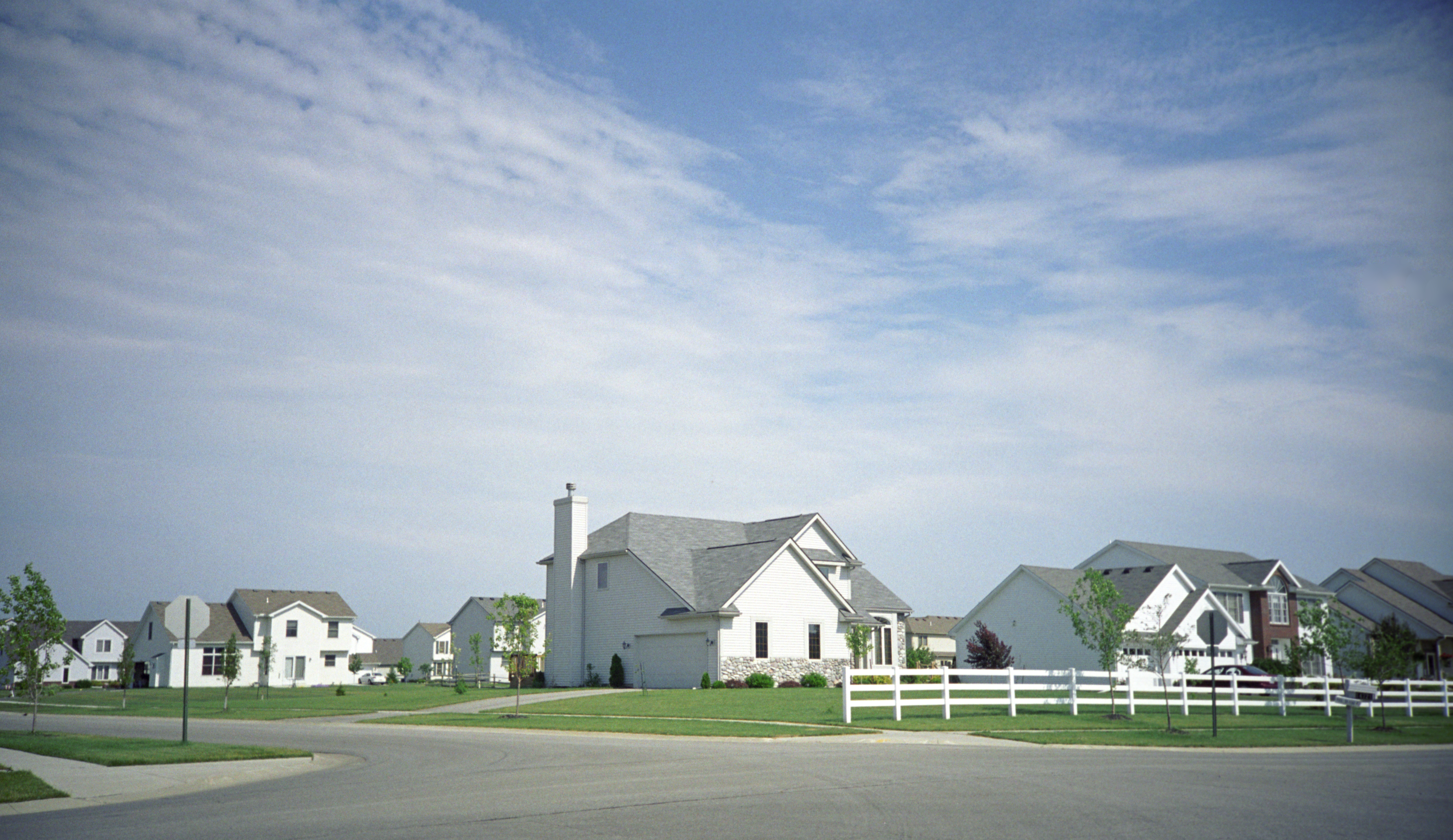
Discover the leading factors affecting your main water line replacement cost in Columbus, including length, material selection, and installation details.

Slow drains and foul smells are telltale signs of a clogged plumbing vent. Find out how to unclog a plumbing vent without getting on the roof in this guide.

Dealing with slow-draining sinks or a full toilet clog? Use this DIY guide on how to clear clogged drains to get your drain working again in no time at all.

If your toilet is leaking at the base, it can be a cause for concern. So grab some towels to stop the flow and explore these six common culprits for a leaky base.